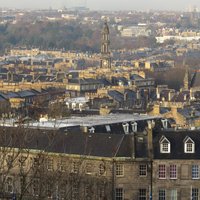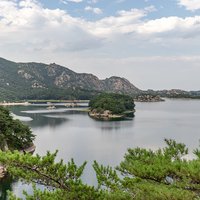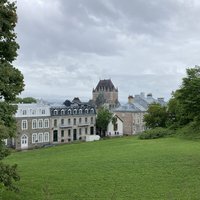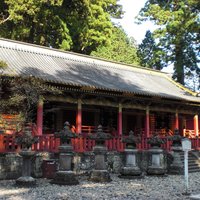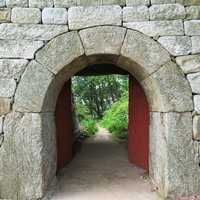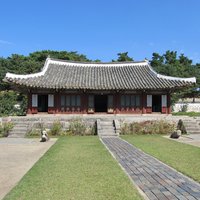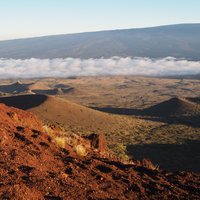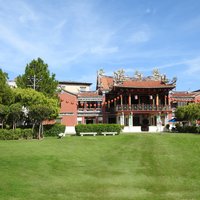Connected Sites
-
Visited 1869. Describes the slums of the "Old Town" in "Notes on Old Edinburgh"
See www.gutenberg.org
-
Bird is believed to have coined (or popularized) the phrase Diamond Mountain "From the spirit shrine on the summit a lovely panorama unfolds itself, billows of hilly woodland, gleams of water, wavy outlines of hills, backed by a jagged mountain wall, attaining an altitude of over 6,000 feet in the loftiest pinnacle of the Keum-Kang San. A fair land of promise, truly! But this pass is a rubicon to him who seeks the Diamond Mountain with the intention of immuring himself for life in one of its many monasteries. A description can be only a catalogue. The actuality was intoxicating, a canyon on the grandest scale, with every element of beauty present. Towards evening "The hills swung open to the light"; through the parting branches there were glimpses of granite walls and peaks reddening into glory; red stems, glowing in the slant sunbeams, lighted up the blue gloom of the coniferæ; there were glints of foam from the loud-tongued torrent below; the dew fell heavily, laden with aromatic odors of pines, and as the valley narrowed again and the blue shadows fell the picture was as fair as one could hope to see. On that enchanting May evening, when odors of paradise, the fragrant breath of a million flowering shrubs and trailers, of bursting buds, and unfolding ferns, rose into the cool dewy air, and the silence could be felt, I was not inclined to enter a protest against Korean exaggeration on the ground that the number of peaks is probably nearer 1,200 than 12,000." - published in 'Korea and her Neighbours', a narrative of travel, with an account of the vicissitudes and position of the country Chapter 11 Diamond Mountain Monasteries Pg. 133 - 149
See www.gutenberg.org
-
Visited 1894, the royal tomb of a princess is described in detail with a sketch of a tomb guardian. (published in Korea and her Neighbours, a narrative of travel, with an account of the vicissitudes and position of the country Volume 1) pg. 63.
-
Visited Quebec City in the 1850's. Describes the old city's picturesque features, as well as fortifications and citadel in "The Englishwoman in America" (pg 270) published in 1856
-
Visited Japan in 1878 and published her travels in "Unbeaten Tracks in Japan. An account of Travels in the interior including visits to the Aborigenes of Yez and the Shrine of Nikko". The visit to Nikko commences in Letter VI (see link)
See www.gutenberg.org
-
"The first two days were spent in turning the flank of the range on which is the so-called fortress of Nam Han, with its priest soldiers, one of the four which are supposed to guard Seoul and offer refuge in times of trouble. On the right bank there are many villages of farmers, woodcutters, and charcoal burners. After circumventing the fine fortress summit of Nam Han, the river enters the mountains. From that time up to the head of possible navigation, the scenery in its variety, beauty, and unexpectedness exhausts the vocabulary of admiration." - Korea and Her Neighbors (pg. 83, 84)
-
Chapter 25 Songdo: A Royal City (Descriptions and sketches of Kaesong City Walls and Manwoldae Palace ruins) "There is a fine bronze bell with curiously involved dragons in one of the gate towers, cast five centuries ago... Outside the crowd and bustle of the city, reached by a narrow path among prosperous ginseng farms and persimmon-embowered hamlets, are the lonely remains of the Kings who reigned in Korea prior to the dynasty of which the present sovereign is the representative, and even in their forlornness they give the impression that the Korean kings were much statelier monarchs than they are now... The palace platform is intersected by massive stone foundations of halls and rooms, some of large area." Isabella Bird "Korea and Her Neighbors (pg. 292-300)
-
Visited Hawaii in 1875 and published her travels in "The Hawaiian Archipelago. Six Months among the Palm Groves, Coral Reefs and Volcanoes of the Sandwich Islands". Letters V and XXV describe her climbs of Kilauea and Mauna Loa.
See www.gutenberg.org
-
Visited in Jan/Feb 1879. Malacca is described in "The Golden Chersonese and the Way Thither" (Chapters VIII-X)
See www.gutenberg.org

